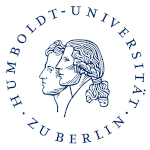The Research Training Group 2575 Rethinking Quantum Field Theory invites applications for
5 doctoral positions in theoretical physics, to start on October 1st 2025 or soon thereafter.
- Scattering amplitudes
- Phenomenology
- Lattice Field Theory
- AdS/CFT Correspondence
- Gravitational Wave Physics
- Mathematical Aspects of Quantum Fields
Successful applicants should hold a degree equivalent to a Master’s degree in theoretical physics or related areas.
Women are strongly encouraged to apply. Disabled applicants will be preferred if they are equally suitable. Applications from people with a migration background are expressly welcome.
The application form will be available here starting March 11, 2025. The application deadline is April 2, 2025.
The application should contain (in a single PDF file):
- motivation letter
- CV
- copies of grade transcripts
- copies of degree certificates
- copy of the Master’s thesis if already available
Moreover, two reference letters will have to be submitted separately. In your motivation letter, please make sure to explain your match to the profile of the RTG, and to include your preference for one or more research areas/topics and possibly supervisors.
Please see our FAQ page for answers to common questions.
Profile of the Research Training Group
Quantum field theory (QFT) plays a fundamental role in theoretical physics. It provides the unification of quantum mechanics and special relativity and as such represents a major intellectual achievement of the past century in which much of modern theoretical physics culminates. The iconic representation of quantum field theory is the Feynman diagram: A graphic representation of the perturbative series expansion, yielding a direct path from a Lagrangian formulation of a physical theory to an observable of interest via Feynman’s path integral. This method is omnipresent in many areas of theoretical physics well beyond its origin in relativistic particle physics. First developed for the Abelian gauge theory of quantum electrodynamics (QED), then extended to the non-Abelian case of Yang-Mills gauge theory and the Standard Model, it may even be applied to perturbative treatments of Einstein’s gravity and beyond. A core principle of QFT is renormalization, giving divergencies encountered in perturbative computations a physical resolution and leading to the very important concepts of effective field theories. The discretized variant of QFT, lattice field theory, enables us to mathematically define a QFT independent of the perturbative expansions and to also study its strongly coupled regime, employing numerical computations of the path integral. The fruitful interplay of quantum field theory with gravity led to many innovations in the field: The AdS/CFT duality yielding a strong coupled formulation of conformal gauge theories via string theory in anti-de-Sitter backgrounds, the double copy entangling Yang-Mills theory and gravity or the use of QFT techniques to perturbatively compute classical gravitational wave observables at high-precision. Finally, symmetries, being of space-time or internal nature, lie at the heart of our understanding of Nature at a fundamental level. Closely tied with QFT, they lead to an enormous reduction of the possible complexity of the theories that are currently being explored.
The training in and further development of these innovations within QFT are the central goals of this research training group. Our group is characterized by broad expertise, ranging from formal aspects of QFT via phenomenology and lattice field theory to analytical methods for gravitational wave research. We have designed a timely qualification program for a new generation of quantum field theorists which will train them in these modern aspects of QFT that have not yet made it into the textbooks and to which members of our consortium have significantly contributed. This broad education will lay a solid foundation for a successful scientific career in theoretical physics. The key elements of our qualification program are (i) introductory and advanced courses on QFT, (ii) an annual retreat with external lecturers and seminars, (iii) a monthly QFT colloquium, (iv) internship in a neighboring research group, (v) self-organized seminars, (vi) presentations on career perspectives outside of academia, and (vii) professional soft skills training.

